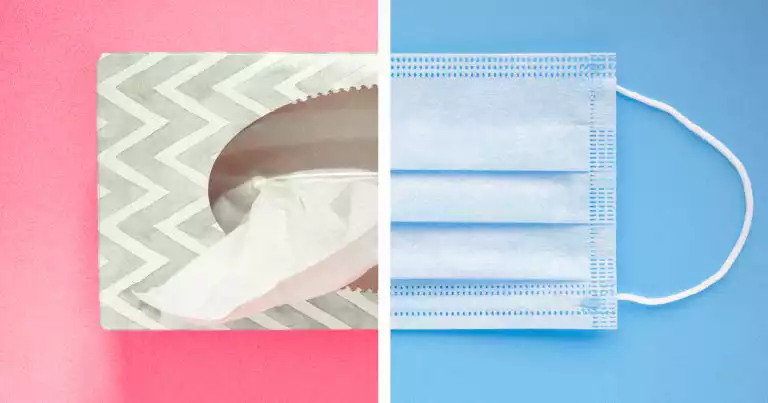Is It COVID-19 or Fall Allergies? Know the Symptoms
2 minute read
While the cooler temperatures of fall are welcomed by many, the changing of the seasons also brings about fall allergy symptoms for millions of people. Those symptoms can include runny nose, nasal congestion, post-nasal drip, cough, and possibly wheezing and shortness of breath. Sound familiar? Many of those are the same symptoms that we’ve heard about for most of 2020 as signs of COVID-19. So how do you know whether your symptoms are COVID-19 or fall allergies?
COVID-19 or fall allergies?
While there are some similarities in symptoms, fall allergies commonly come with itchy, watery eyes, and lots of sneezing.
If your symptoms turn into fever, cough, chills, body aches, and loss of taste or smell, you should plan to get tested for COVID-19. Getting tested is a way to take control of your health, and to prevent spreading the illness to your loved ones and those around you.
Are allergy sufferers at a higher risk of contracting COVID-19 or suffering from more severe symptoms if they do contract it?
People with certain medical conditions are at higher risk for experiencing the worst of COVID-19. However, there isn’t enough evidence at this time to know whether allergy sufferers fall into the high-risk category.
Dr. Juanita Mora is a spokesperson for the American Lung Association and an allergist/immunologist at the Chicago Allergy Center. She assures patients that allergy medications themselves in no way suppress your immune system or put you at a greater risk of complications. So if you have fall allergies, keep using your medications and nasal sprays as prescribed.
Masks and Allergy Sufferers
The CDC recommends everyone over the age of two, including allergy sufferers, wear a mask to slow the spread of COVID-19. The only exceptions are for individuals with breathing problems, or those who are unconscious or incapacitated and would need assistance removing a mask.
Masks can also offer mild protection against seasonal fall allergies by keeping larger particles from being inhaled. Wear a mask when you’re outdoors if you’re engaging in an activity that stirs up pollen such as raking or mowing the lawn.
Cloth masks should be washed after each use, especially when worn outside on a day with high pollen or mold count.
Strategies For Managing Fall Allergies
- Limit your time outside when the pollen count is high, typically late morning or midday.
- Stay indoors with windows and doors closed in an environment with clean air.
- Clean your heating vents and change the filters before turning on your heat for the first time. This will get rid of any mold or allergens that may have gotten trapped inside over the summer.
- To remove pollen, mold, and other particles from the air, install a HEPA filter in your heating system.
- Keep your indoor air humidity between 40-60% with a humidity control system.
